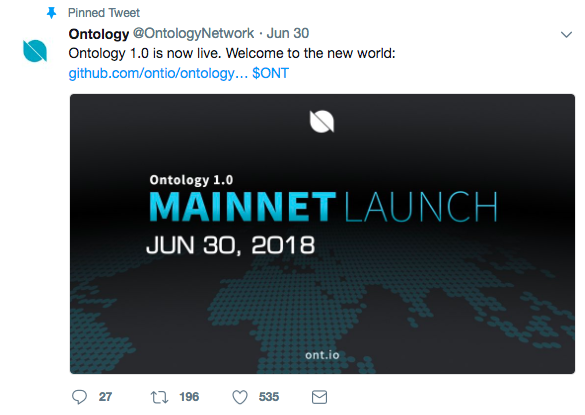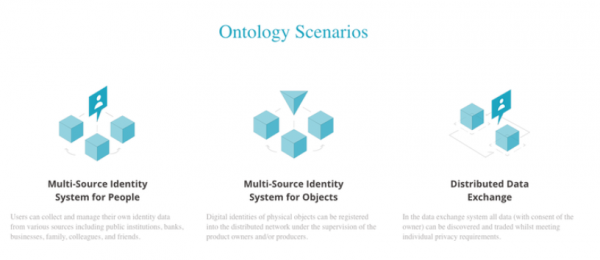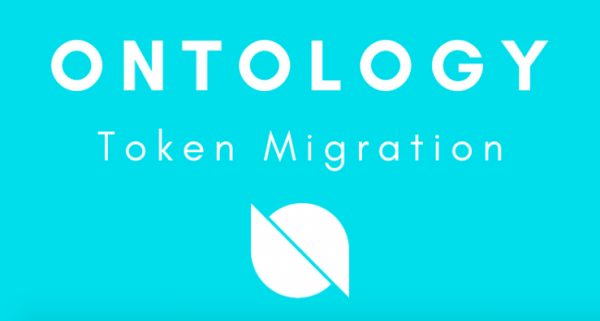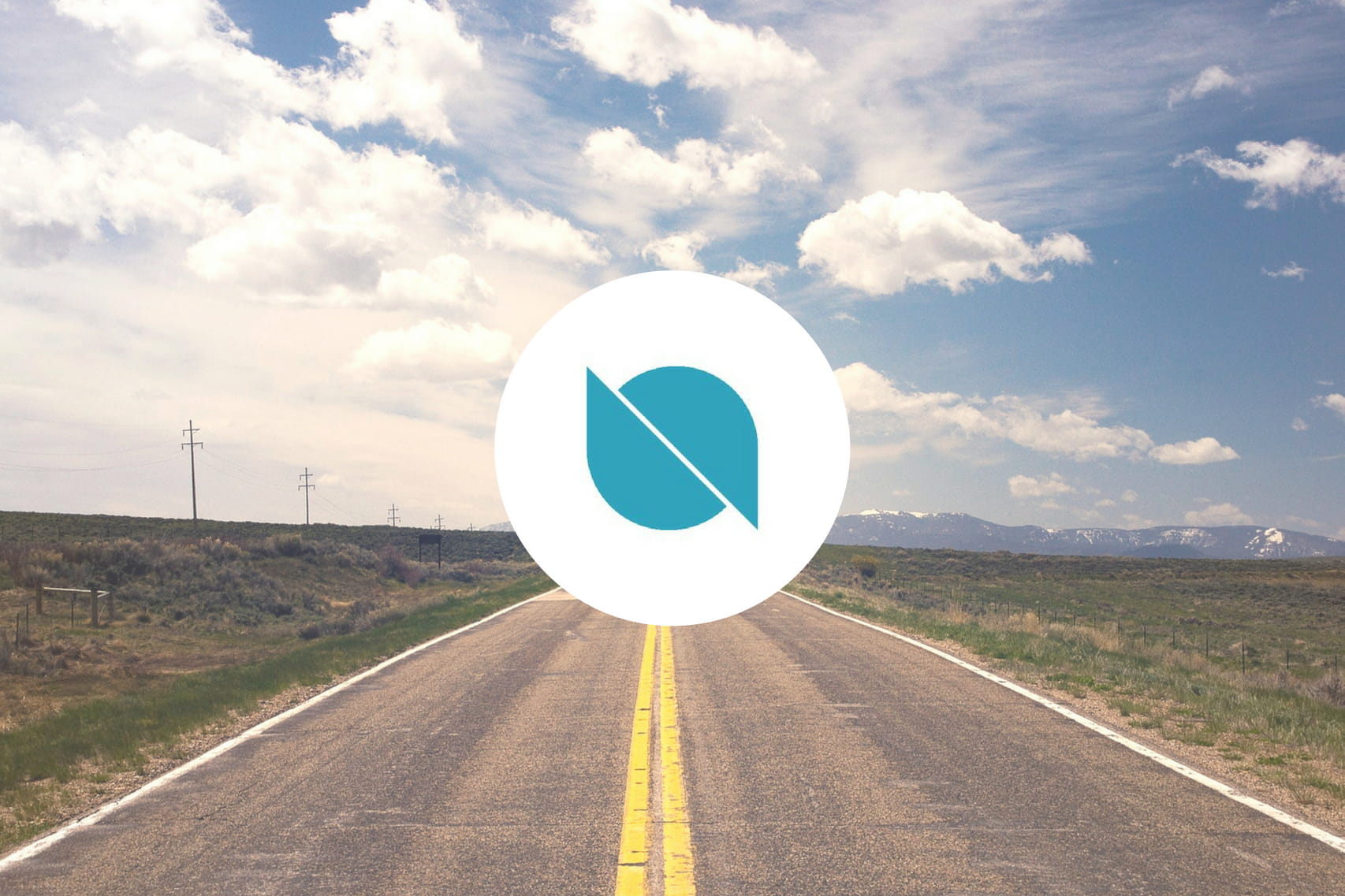If you’ve read our review of Ontology’s ambitious roadmap, then you already know big things are in the works for this Shanghai-based project. As we enter Q3 2018, Ontology has injected its name into the headlines with the long-awaited launch of its mainnet.
For anyone unfamiliar, Ontology is an enterprise-focused blockchain platform that is aiming to provide a high volume of fast and cheap transactions, all while contending with the challenges of interoperability and identity. If you’d like to learn more, check out our primer What is Ontology? to get yourself up to speed.
If you’re already an Ontology fan (or to a lesser extent, a NEO fan), June 30 was the big day. It was the day that the world’s 21st-biggest cryptocurrency (by market cap) finally launched its own proprietary technology.

The launch of Version 1.0 comes after months of anticipation and a tremendous amount of work by the Ontology team. Mainnet launches often come with a lot of fanfare, but the truth is this is just another starting point. In the following, we’ll discuss some of the Ontology 1.0 features, talk about the coming ONT token swap, give it a bit of context, and cast a speculative eye to the future.
Introducing Ontology V1.0
In an open letter to their community, Ontology outlined the core infrastructure components of their freshly launched mainnet. These are:
- Public chain basic services
- High-performance customizable blockchain framework
- Protocol groups
Peel back the onion a bit further and you’ll find a decentralized identity authentication protocol, distributed data management protocol, and credit score protocol. At the application layer, there’s the integrated client product (ONTO), a trust search engine, and a distributed data exchange framework.
These features enable things like the support of “public chain customization” and “chain network collaboration.” Zoom out a bit further and you’ll see that all of these features aim to serve Ontology’s higher purpose in some way. And that higher purpose is to become a bridge that links governments, businesses, and individuals (via private, consortium, and public blockchains) to the main hub of the digital economy, NEO.

Looking at Ontology 1.0’s other features, we see a number of “firsts.”
The first decentralized smart contract execution platform with identity, the first version of the core chain, reached over 5,000 tps without performance enhancements, etc. The official announcement also made mention of the fact that Ontology’s dedication to security remains unchanged. Plans are in place to continue cooperating with NCC, Baimaohui, and SlowMist to ensure the security of its nodes.
Consensus and Smart Contracts
Part of Ontology v1.0’s launch has been the (ongoing) pioneering efforts of developing the VBFT algorithm, a hybrid consensus algorithm which utilizes various technologies. VBFT integrates PoS, verifiable random function (VRF), and Byzantine fault tolerance (BFT), which, according to Ontology, “can be closely combined with existing governance models to greatly improve performance and usability.”
The VBFT model also scores well in terms of resource consumption, a key point of contention for many people.
Then you have the SmartX tool, which is a one-stop IDE (integrated development environment) for programmers to build, test, and execute smart contracts. The SmartX comes with a range of functionalities, primary among them a powerful editing tool, a variety of templates, and the ability to commission developers. All of the above is intended to make it easy for developers to build on the native ONT blockchain.
Nailing the Swap
With the launch of the mainnet, Ontology’s NEP-5 ONT tokens (which exist on NEO’s blockchain) will need to get swapped for ONT tokens/coins on Ontology’s network. Similar to NEO, Ontology has a dual token model (ONT and ONG) and now that the mainnet is live, holders of ONT will periodically (once a month) receive airdropped ONG.
When will all this take place? Token swapping will begin on July 9, 2018, and will finish on October 1, 2018. All users must finish exchanging tokens during this period of time — there won’t be another chance after this date.

Since mainnet ONT tokens are indivisible (smallest unit is 1 ONT), only whole numbers of NEP-5 ONT can be exchanged. If you have smaller units of NEP-5 ONT it’s best to make your ONT balance a whole number before moving them. If you plan to swap things manually, it’s also a good idea to test the waters with a small amount first.
The Ontology team has updated its Mainnet ONT token swap guide, which should be the definitive source of guidance on this issue. Here are the most pertinent details from it.
The following methods will be utilized for the token swap:
- ONTO wallet one-stop mapping
- Swapping using other wallets
- Automatic exchange-based mapping and migration
It’s important to note that the Ledger wallet does not support private key extraction, and because of this it’s recommended that any ONT holders storing their tokens there opt for an exchange swap. A number of exchanges will be supporting the ONT swap.
Below are official statements from a few of the prominent ones:
If you have your tokens stored on one of these exchanges, you don’t need to do anything since the exchanges will handle everything for you. If you want to do the swap manually using the Neon wallet, it’s best to follow the Ontology team’s advice.
When it comes to things like token swaps, exercise caution. There will always be scammers trying to get their hands on your tokens, so don’t trust anything other than official Ontology instructions.
There are a lot of questions currently flying around in the ONT community, but given a bit of time, all of these should be answered by Ontology or an exchange. Ontology Discord is the place to go for any pressing questions (use #token-swap), and you can also check the status of a manual token swap by visiting the status page.
Looking Forward
Ontology seems to have a bright future ahead of them, and getting the mainnet launched is to put an enormous building block in place.
On the immediate horizon, Ontology is planning to launch ONTO and SmartX 2.0. ONTO will include support for autonomous and controllable digital identity and mainnet digital assets management. SmartX 2.0, on the other hand, will have the latest smart contract development guidelines and offer more support for Dapp developers.
Whether Ontology can follow through on all – or any – of its ambitions is an open question. But given its team, latest progress, and proximity to NEO, it’s not hard to imagine it becoming an integral part of the future blockchain economy.

